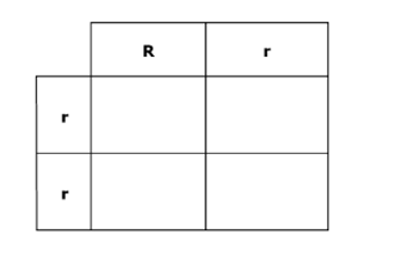Scientists often experiment with brassica plants because bra - GED Practice Questions
Question
Scientists often experiment with Brassica plants because Brassica plants grow very fast, and they produce seeds 30 days after being planted. This quick maturation allows scientists to study several generations of Brassica plants in a short time. Usually the scientists use Brassica plants to study genetics and inheritance.
In one investigation that studied the inheritance of Brassica stem color, scientists crossed a heterozygous dominant (Rr) plant with a homozygous recessive (rr) plant. This resulted in offspring with purple stems (RR or Rr) and offspring with green stems (rr). A Punnett square for this cross is shown below.

What percentage of offspring will have green stems and purple stems respectively?
Answers
-
-
correct
-
-
Explanation
The correct answer is (B). The Punnett square shown indicates a cross between a heterozygous dominant plant (Rr) and a homozygous recessive plant (rr). This kind of cross will result in a 1:1 ratio of offspring with one dominant and one recessive allele (Rr) to offspring with two recessive alleles (rr). Therefore, 50% of the offspring will have purple stems (Rr) and 50% will have green stems (rr).
No Payment Cards Needed






